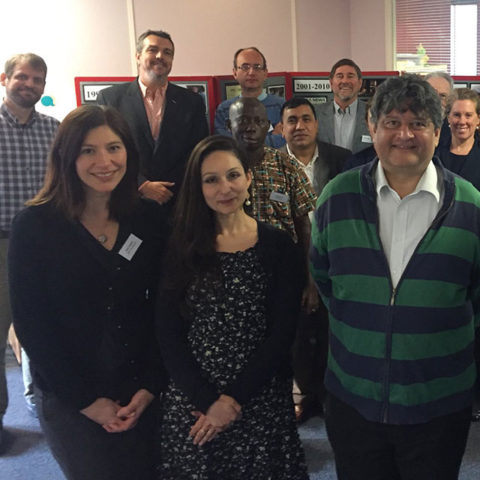
Global assembly reinvigorates efforts to beat leprosy
Thursday 22nd March, Colchester – A global assembly, hosted by UK-based specialist leprosy charity, Lepra, brought together delegates from across the world to reinvigorate efforts to beat leprosy[1].
The assembly was held at Lepra’s Head Office in Colchester, Essex on Monday 19th – Friday 23rd March. The meetings were chaired by the International Federation of Anti-Leprosy Associations (ILEP)[2] and the Disease Management, Disability and Inclusion (DMDI) working group of the Neglected Tropical Disease NGO Network (NNN)[3]. The leadership team for the Global Partnership for Zero Leprosy[4] also hosted their Inaugural Meeting.
The meetings attracted delegates from America, Geneva, India, Nepal, The Netherlands and Paraguay and were attended by representatives including the World Health Organisation (WHO), United Nations (UN) and Novartis Foundation.
The ILEP Technical Commission meeting discussed how to advance the research which is needed to accelerate efforts to achieve zero leprosy, and practical issues relating to how ILEP can strengthen its monitoring and evaluation. The Panel of Men and Women affected by leprosy discussed the ways to increase meaningful participation for those affected by this disease, including playing a leading role in updating health-related stigma guidelines.
Geoff Prescott, Chief Executive at Lepra said:
“Leprosy is a tragedy, but it needn’t be the case as it’s completely curable[5]. However, a lot still needs to be done to beat this disease. There are more and more cases, but less funds to treat it. That’s why these meetings are important as they enable different organisations from across the world to get together in one central place to discuss future projects and partnerships to accelerate efforts to end leprosy.”
Diana Lockwood, Infectious Disease Physician and Leprologist at London School of Hygiene and Tropical Medicine said:
“One of the biggest challenges with leprosy is that it can often be difficult to detect and treat nerve damage – the hallmark of this disease. By pulling experts together within the leprosy field, today we were able to discuss various research programmes and projects that can be explored to treat this, in addition to other leprosy complications.”
Mathias Duck, Chair of ILEP’s Panel of Women and Men affected by leprosy said:
“I was diagnosed with leprosy in 2010, which affected the nerves, sensitivity and strength in my right hand. I was working at a leprosy reference hospital at the time and I was treated right away and recovered completely. Continuous and increased efforts in leprosy are needed to treat people on time, stop transmission, prevent disabilities and reduce stigma. That’s why the panel is important as it brings people affected by leprosy together to give them a voice which helps to shape policies and projects.”
Ends
[1] According to the World Health Organisation, more than 200,000 new cases of leprosy are detected and diagnosed each year. Survey and research data also shows that more than 7 million people are currently affected by leprosy worldwide. Of these, 4 million have developed life-changing disabilities as a result of delayed treatment while over 3 million cases remain undiagnosed. Reported cases in India are at a 10 year high.
[2] ILEP is a Federation of 13 international non-governmental organisations united to create a world free of leprosy.
[3] The NNN was established in October 2009 to create a global forum for non-governmental organisations working to control onchocerciasis, lymphatic filariasis, schistosomiasis, soil transmitted helminths, and trachoma. Other diseases including leprosy have since joined the forum.
[4] Leprosy groups have joined forces to launch a Global Partnership for Zero Leprosyto accelerate progress towards a world without leprosy.
[5] The cure for leprosy is Multi Drug Therapy which is administered free of cost to leprosy patients in all endemic countries.